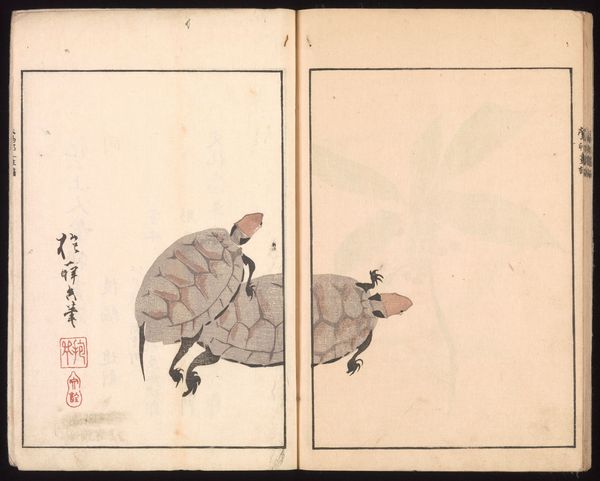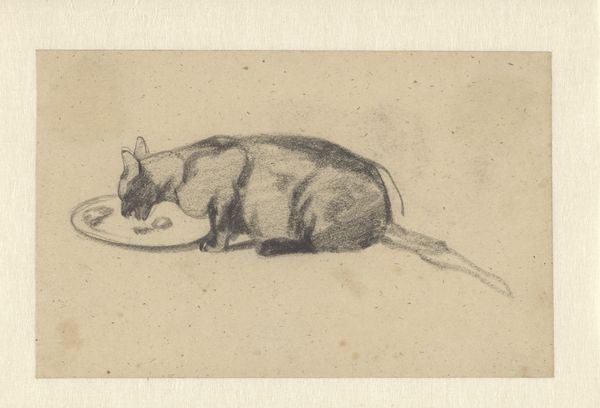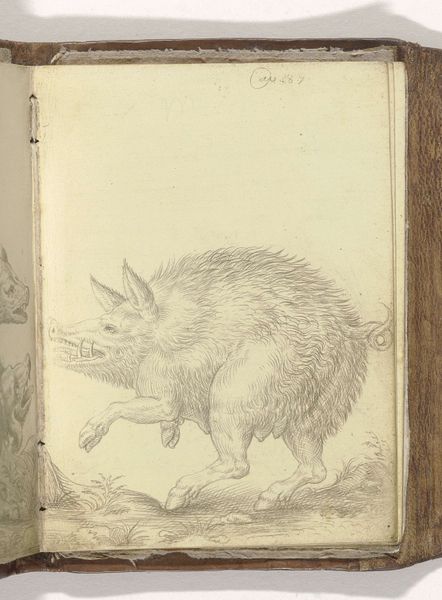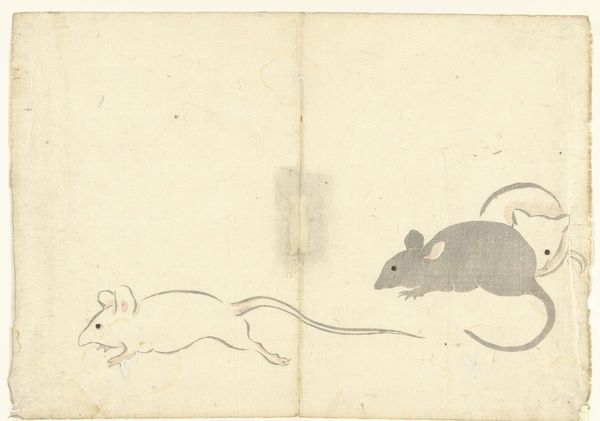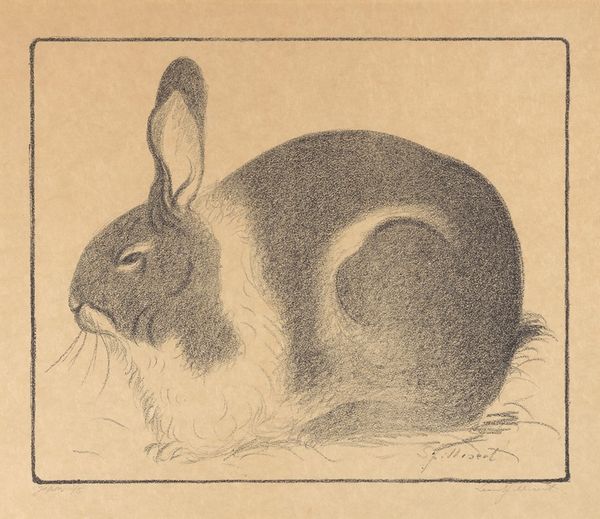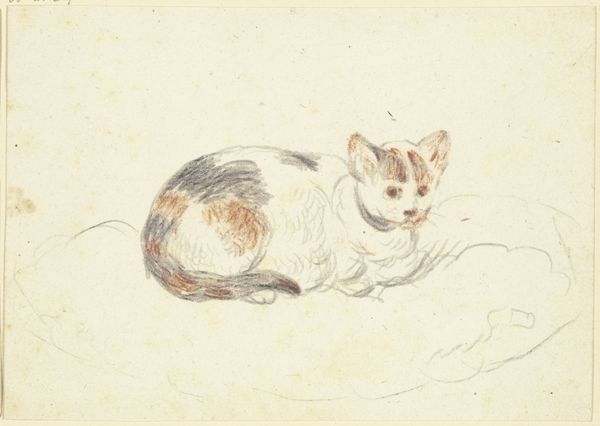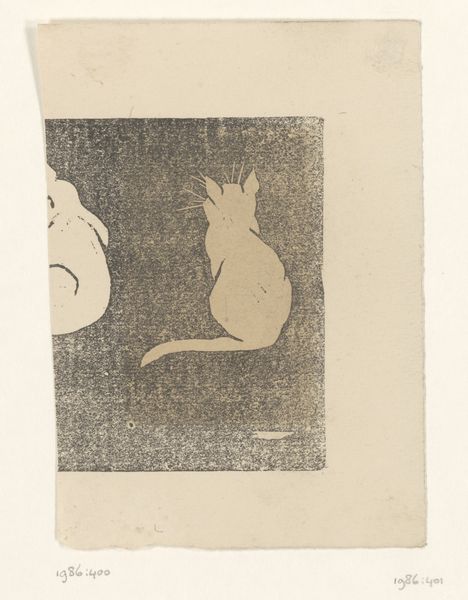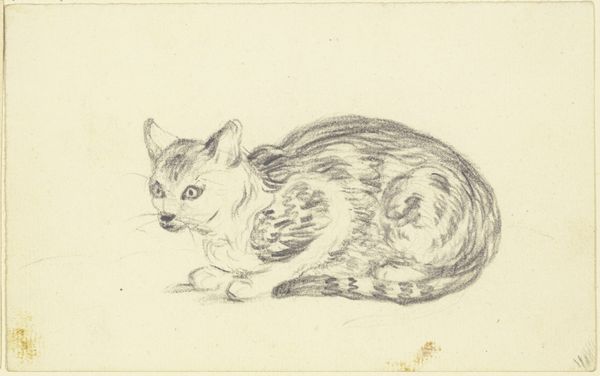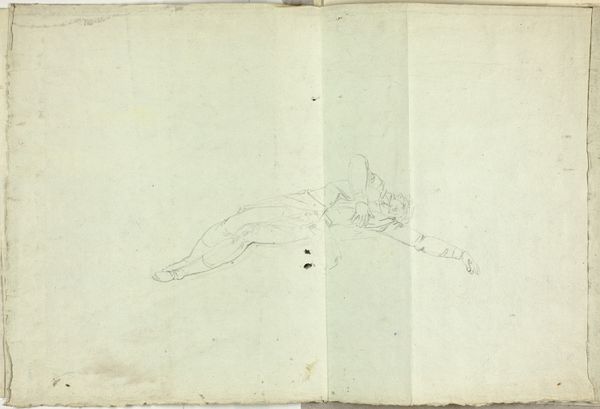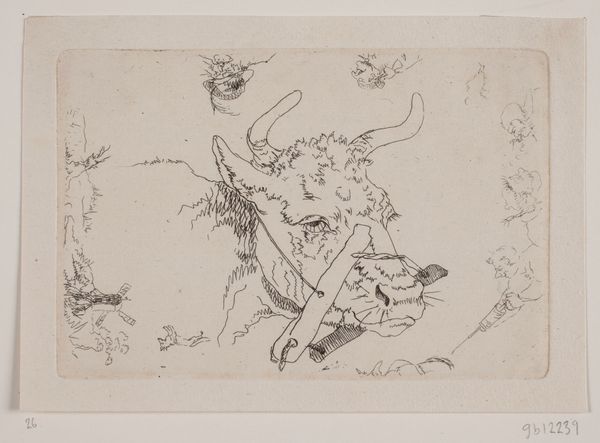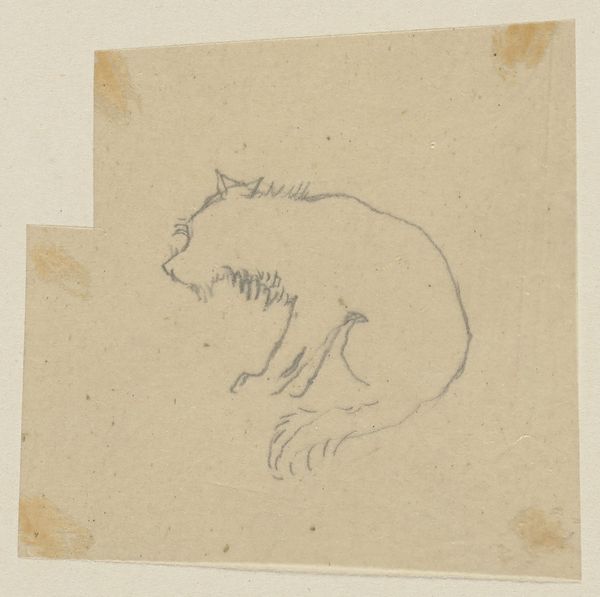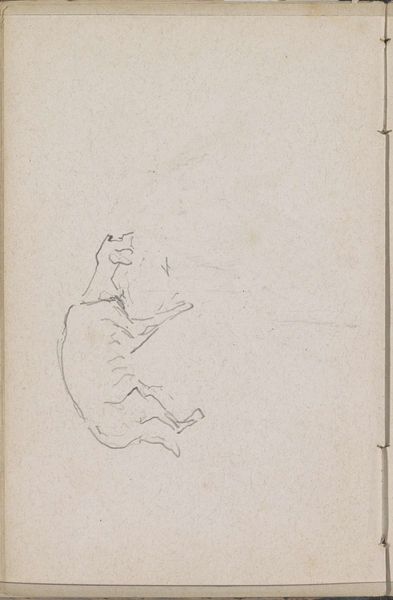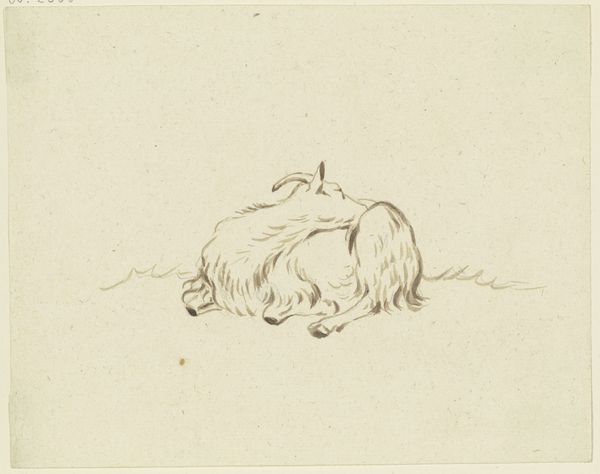
drawing, paper, ink
#
drawing
#
animal
#
asian-art
#
ukiyo-e
#
paper
#
ink
Dimensions: 10 3/8 × 7 1/16 in. (26.3 × 18 cm)
Copyright: Public Domain
Curator: Here we see a double-page drawing from the "Kihō Picture Album," created by Kawamura Kihō in 1827. It's rendered in ink on paper, and features two rabbits nestled together. Editor: I'm struck by the texture. The varying densities of ink create a sense of depth despite the monochrome palette. It’s gentle and endearing, quite approachable. Curator: It's a lovely example of the ukiyo-e tradition applied to the depiction of animals. Kihō was working within a vibrant artistic community in Osaka at the time, serving a merchant class hungry for accessible and engaging art. These albums would have been a means of circulating his designs, acting almost as portable exhibitions. Editor: I am curious about the process itself. How were these images reproduced? Was it woodblock printing? You know, examining the precise lines and tonal variation, I see an argument for freehand drawing, as each rabbit demonstrates slightly distinct stroke choices which impact texture and light in the image overall. Curator: It is ink drawing, but consider its market. There's a populist impulse behind ukiyo-e. Artists weren't simply creating images; they were producing commodities for a rapidly expanding urban population. The *act* of image distribution held value here too. Editor: And consider the rabbits themselves! In East Asian art, rabbits often symbolize cleverness and longevity. Their representation here, in what seems to be an informal portrait style, humanizes the animals and, as you point out, it fits with ukiyo-e themes of approachable images with cultural narratives attached. How were works like these valued socially at the time of their creation? Curator: Absolutely! And, these albums often served as visual encyclopedias for artisans. The animal sketches could have functioned as models for textile designs or lacquerware, blurring the line between 'high art' and applied arts. It’s fascinating to trace how such imagery permeated different levels of society. Editor: Indeed! I see this work in a completely new way when I try to view the art through the daily lives, cultural beliefs, and trades of those who were in proximity of it when it was being made. Curator: Agreed. Looking at "Kihō Picture Album" isn’t just admiring rabbits; it’s connecting with the complex web of artistic production, distribution, and consumption in 19th-century Japan.
Comments
No comments
Be the first to comment and join the conversation on the ultimate creative platform.
